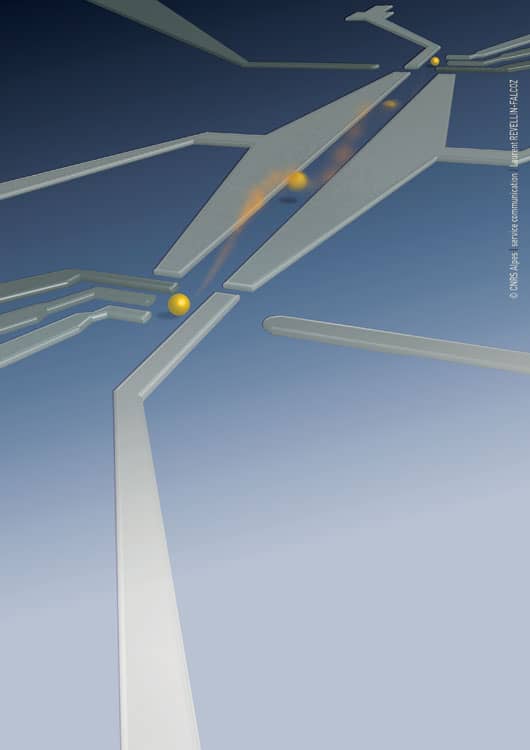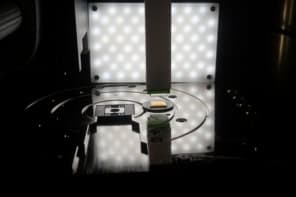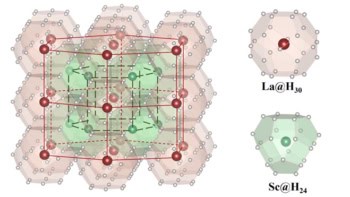
Two independent groups of physicists have taken an important step towards the creation of a practical quantum computer by showing how to transfer single electrons over relatively long distances between quantum dots. Both schemes involve using sound waves on the surface of a material to propel electrons between the quantum dots – which are sub-micron-sized pieces of semiconductor. The teams are confident that they will soon be able to show that electrons arrive at their destination with their quantum information intact, making the system a viable “quantum data bus” for a quantum computer.
Quantum computers, which exploit purely quantum phenomena such as superposition and entanglement, should in principle be able to outperform classical computers at certain tasks. But building a practical quantum computer remains a challenge because the physical entities that store and transfer quantum bits (qubits) of information are tricky to implement and are easily destroyed.
The advantage of using quantum dots as qubits is that they can hold zero, one or two electrons, thereby defining the “logic state” of the qubit data. Furthermore, two electrons in a dot are entangled – a condition that persists even if one electron is carefully removed and transported some distance away. This process, which is known as “quantum teleportation”, can play an important role in quantum computers.
Avoiding decoherence
While physicists can reliably transfer a single electron short distances between adjacent quantum dots, moving it around an integrated circuit containing hundreds or thousands of qubits is a significant challenge. The problem is that an electron in a metal or semiconductor travels through a vast “sea” of other electrons that can destroy the entanglement. One way to avoid this “decoherence” is to essentially drain the sea of electrons from the appropriate channels in the circuit – effectively making them insulating. The challenge is then how to give the electron enough energy to send it flying through the channel without causing decoherence.
Now, however, Tristan Meunier and colleagues at the Institut Néel in Grenoble, the University of Tokyo and the University of Bochum in Germany – and, independently, Rob McNeil and colleagues at the University of Cambridge in the UK – have devised a way to deliver that kick. Both teams fabricated similar semiconductor devices, each with two quantum dots separated by several microns. In both cases the dots are connected by a narrow semiconductor channel between two electrodes.
To deplete the channel of all its conduction electrons, both teams applied a negative voltage to both electrodes. The kick is supplied by a piezoelectric actuator that injects a surface acoustic wave (SAW) pulse along the channel. A SAW is a sound wave that travels on the surface of a material, where it causes the positive ions in the channel to oscillate back and forth. The result is a changing electric field that drives the electron forward.
Extremely fast transfer
Meunier and colleagues employed one piezoelectric actuator, which was able to drive an electron the 3 µm between the two dots in just 1 ns. This is much quicker than the several microseconds it takes for decoherence to destroy a quantum dot qubit, something that is essential for a practical quantum computer, according to Meunier. Meanwhile, in Cambridge, McNeil and colleagues used two opposing piezoelectric actuators to bounce an electron back and forth between quantum dots separated by 4 µm. Indeed, McNeil said that they were able to do this up to 60 times, which means that the electron travelled a total of 0.25 mm.
Both experiments were carried out at extremely low temperature, which means that there are few random sound waves in the channel that would cause decoherence. The SAW wave itself is coherent and should not destroy entanglement, according to McNeil. However, neither team has confirmed that the electron does not suffer decoherence on its journey – something that both labs are currently investigating.
The work of both teams is described in two separate papers in Nature.




